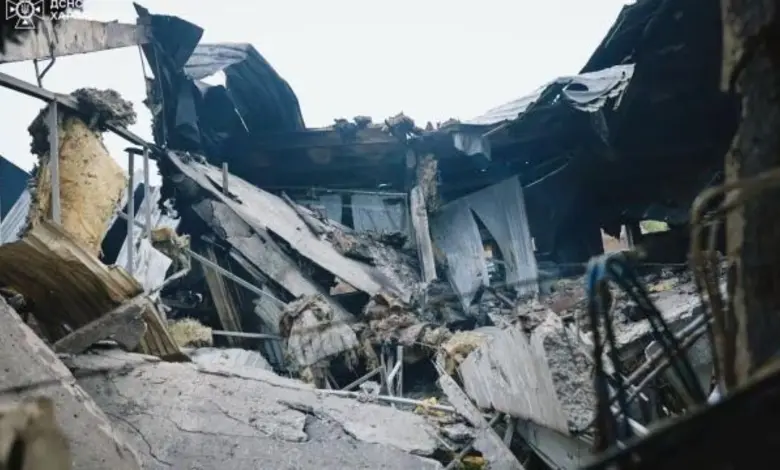As Russian forces unleashed a devastating missile barrage on the western Ukrainian city of Ternopil, claiming 26 lives—including three children—a fresh U.S. peace blueprint has emerged, potentially requiring Kyiv to relinquish significant territory and drastically shrink its military, according to sources briefed on the plan.
The attack, one of the most lethal on Ukraine’s rear areas since Moscow’s full-scale invasion in 2022, unfolded early Wednesday, with cruise missiles ripping through residential buildings and igniting fires that spiked chlorine levels in the air to hazardous heights. Rescuers, amid choking smoke and twisted wreckage, combed through debris using cranes, while authorities urged Ternopil’s 200,000 residents to shelter indoors and seal windows. Ukrainian President Volodymyr Zelensky decried the assault as a brazen strike on civilians “simply at home, peacefully sleeping.”
Among the grieving families was Oksana, 46, who had phoned her 20-year-old son Bohdan moments before the blasts, urging him to flee their ninth-floor apartment. “He said: ‘Mum, don’t worry, everything will be fine.’ But it was too late,” she recounted to AFP, her words heavy with loss. Her sister, Natalia Bachinska, added that the family’s home was obliterated, with Bohdan still unaccounted for. The state emergency service tallied 92 injuries, including 18 children, underscoring the human toll far from the eastern front lines.
UN human rights chief Volker Turk expressed horror at the civilian casualties, highlighting how “powerful long-range missiles combined with waves of drones” wielded by Russian forces exposed the raw brutality of the nearly four-year war. Ukrainian Foreign Minister Andriy Sybiga seized on the incident to lambast Moscow’s rhetoric: “This is how Russia’s ‘peace plans’ look in reality.”
Against this grim backdrop, the U.S. proposal—detailed to AFP by an anonymous source familiar with its contents—mirrors many of Russia’s stringent demands, which Kyiv has long dismissed as outright surrender. It calls for formal acknowledgment of Crimea and other annexed regions under Russian control, a reduction of Ukraine’s forces to 400,000 troops, and the forfeiture of all long-range weaponry. Notably vague on Moscow’s concessions, the draft leaves open whether it reflects President Donald Trump’s direct vision or that of his advisors. The White House has yet to respond to inquiries, while the Kremlin dismissed related reports as unremarkable.
The initiative follows a fruitless bid by Zelensky during his surprise Turkey visit to revive U.S. involvement, where Trump’s anticipated envoy, Steve Witkoff, ultimately skipped the talks. Absent Russian delegates, Turkish President Recep Tayyip Erdogan pressed both sides toward Istanbul negotiations, which have so far produced only prisoner swaps and the return of soldiers’ remains. Zelensky, undeterred, voiced hopes for resuming POW exchanges by year’s end.
On the diplomatic front, U.S. Army Secretary Daniel Driscoll led a Pentagon delegation to Kyiv, engaging Ukrainian Defence Minister Denys Shmygal and top commander Oleksandr Syrsky. CBS News, citing U.S. military sources, described the mission as a push to resolve the conflict. Syrsky called his discussions “productive,” reiterating Kyiv’s priorities: bolstering air defenses, enhancing long-range strikes on Russian assets, and fortifying the front to blunt enemy advances.
Axios had earlier revealed secret U.S.-Russian brainstorming on ending the war, though Moscow offered no fresh insights. With winter approaching and Russian assaults hammering Ukraine’s power infrastructure—while troops inch forward on the battlefield, occupying about one-fifth of the country—the proposal arrives amid Kyiv’s pleas for tougher U.S. sanctions to compel negotiations. Yet, as Ternopil’s rubble attests, the path to peace remains fraught with peril and profound human cost.
